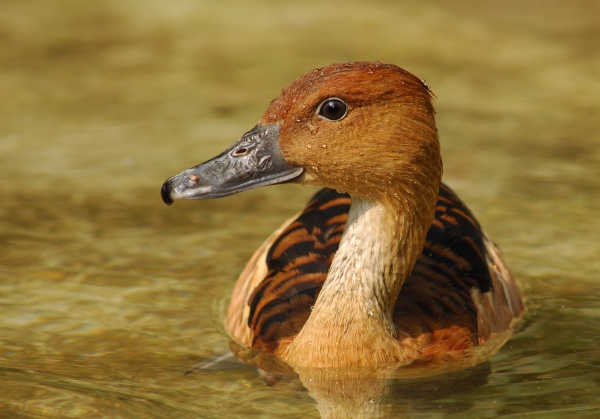Facts About Fulvous whistling duck
The fulvous whistling duck, also known as the fulvous tree duck, is a captivating bird found in tropical regions worldwide. Its reddish-brown plumage, long legs, and striking white band across its black tail, visible during flight, make it a remarkable sight. These ducks thrive in wetland habitats rich in vegetation, ideal for their breeding requirements. They construct nests from plant materials and typically lay around ten eggs. These eggs hatch within 24-29 days, and the fluffy gray ducklings leave the nest shortly afterward, though their parents protect them until they can fly at approximately nine weeks old.
Whistling ducks, including the fulvous whistling duck, belong to the Anatidae family and possess a distinctive hump-backed appearance. The fulvous whistling duck is closely related to the wandering whistling duck, with which it forms a superspecies. These ducks are widespread, breeding in regions such as South America, Africa, the Indian subcontinent, and parts of the Southern United States. Renowned for their noisy whistling calls, they are often observed in small groups, feeding on plant materials in wetlands.
Breeding typically occurs when water is plentiful. These ducks are known for their lifelong monogamous relationships. They build their nests on the ground among vegetation or in tree cavities, and both parents share the responsibility of incubating the eggs. Once the eggs hatch, the ducklings, which are quite independent (precocial), leave the nest soon thereafter. Fulvous whistling ducks primarily feed on seeds, bulbs, grasses, and occasionally insects, which they forage for by picking items while walking or swimming.
According to the International Union for Conservation of Nature (IUCN), the fulvous whistling duck is classified as "Least Concern" due to its large population and extensive distribution. Although their numbers are declining, they are not currently at risk of extinction. Interestingly, these ducks have even expanded their range in the West Indies and the Southern United States. However, they face threats from hunting, pesticide use, and habitat loss. Research has demonstrated that these ducks play a crucial role in wetland ecosystems. They are protected under agreements such as the Agreement on the Conservation of African-Eurasian Migratory Waterbirds (AEWA).

 Mozambique
Mozambique